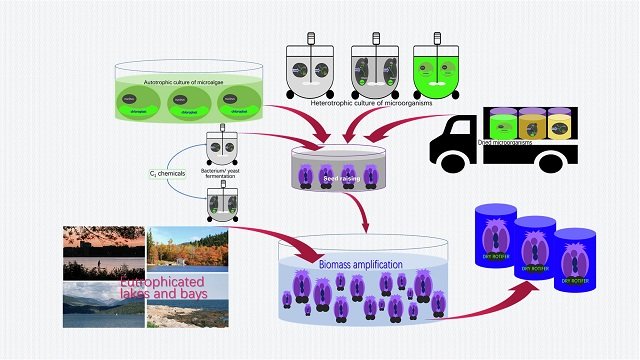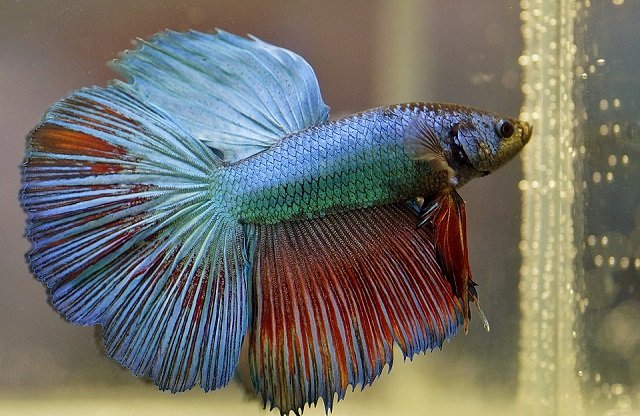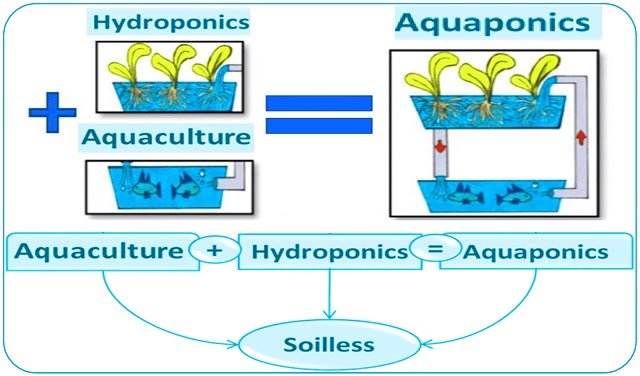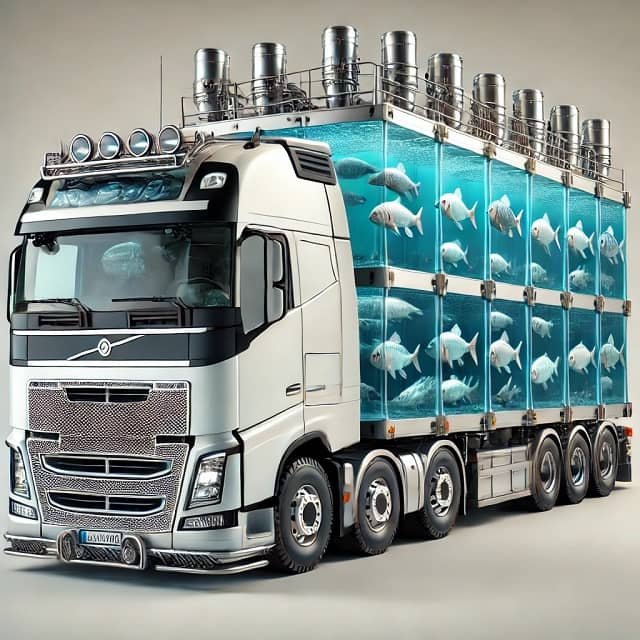
The production of live feed, especially rotifers, is one of the fundamental pillars in the larviculture of fish and crustaceans. However, it also represents one of the biggest operational and economic challenges for hatcheries worldwide. The need to cultivate microalgae under controlled conditions, such as Nannochloropsis oculata, entails high costs in facilities, nutrients, and specialized labor, acting as a bottleneck for many producers.
Faced with this situation, a group of researchers from the Ocean University of China has explored an innovative solution: the use of natural phytoplankton from eutrophic waters to “domesticate” and feed the rotifer Brachionus plicatilis. This approach could not only simplify the process but also drastically reduce the associated costs, opening a new door to more sustainable and profitable aquaculture. A recent study evaluated the feasibility of this technique, and its results are more than promising.
The challenge of producing quality live feed
Success in the early life stages of many aquaculture species critically depends on the availability of a suitable first feed. Rotifers, due to their size and nutritional profile, are the ideal candidate. Traditionally, their mass culture has been based on the supply of monospecific microalgae cultivated in-situ.
The problem is that maintaining these microalgae cultures is a delicate and expensive process. It requires laboratory conditions, sterilization, specific fertilizers, and constant monitoring to prevent contamination, which raises the final cost of the live feed and, consequently, of the juveniles produced. But what if we could use nature itself as a source of algal food, one that is also abundant and free?
An ingenious experiment: using lake water to raise rotifers
To answer that question, the scientists designed an experiment focused on simplicity and practical applicability. The objective was to determine if wild phytoplankton, collected from a eutrophic body of water, could sustain a dense and nutritionally adequate population of rotifers.
The step-by-step methodology
- Feed collection: The scientists collected water from a eutrophic lake (Dianshan Lake, Shanghai), known for its high primary productivity. This water, rich in natural phytoplankton, was filtered through a 20 µm mesh to remove larger zooplankton and potential predators of the rotifers.
- The rotifer under study: They used a strain of the brackish water rotifer, Brachionus plicatilis, which is widely known and used in global aquaculture.
- The experiment: The researchers set up several culture tanks where an initial population of rotifers was inoculated. These tanks were fed exclusively with the previously filtered lake water. For 23 days, the population density of the rotifers was monitored daily.
- Nutritional analysis: At the end of the trial, they analyzed the fatty acid composition of the natural phytoplankton and the rotifers that fed on it. This step was crucial to verify if the nutritional profile met the requirements of fish larvae, especially regarding essential fatty acids such as EPA, DHA, and ARA.
A resounding success for wild phytoplankton
The findings of the study demonstrated the potential of this unconventional technique.
- Exceptional population growth: The rotifers not only survived but thrived. The population reached a maximum density of 521 individuals per milliliter (ind./mL) on the 23rd day of the experiment. This density is comparable, and in some cases superior, to those obtained with traditional methods using pure microalgae cultures.
- Ideal phytoplankton dominance: The analysis of the lake water revealed that the phytoplankton community was dominated by the species Chlorella vulgaris. This microalga is recognized for its good nutritional value and is frequently used in aquaculture, which partly explains the successful growth of the rotifers.
- Adequate fatty acid profile: This is perhaps the most important finding for the sector. The rotifers fed with the natural phytoplankton showed a high-quality fatty acid profile. They contained significant levels of:
- Eicosapentaenoic Acid (EPA): 7.7%
- Docosahexaenoic Acid (DHA): 1.9%
- Arachidonic Acid (ARA): 1.6%
These three fatty acids are essential for the neurological development, survival, and growth of marine fish larvae.
Practical implications for the aquaculture farmer
The conclusions of this study have a direct and practical impact on the aquaculture industry.
Stay Always Informed
Join our communities to instantly receive the most important news, reports, and analysis from the aquaculture industry.
- Cost reduction and operational simplification: The ability to use eutrophic water as a direct food source eliminates the need to maintain costly and laborious microalgae cultures. This could significantly reduce the operational costs of hatcheries, making juvenile production more accessible, especially for small and medium-sized producers.
- Sustainability and circular economy: Taking advantage of the excess nutrients in eutrophic waters (an environmental problem in many regions) and converting it into high-value biomass (live feed) is a clear example of a circular economy. A potential problem is transformed into a valuable resource.
- Large-scale viability: Although this was a laboratory-scale study, the results suggest that the “domestication” of natural phytoplankton communities is a viable strategy for the mass production of rotifers.
Conclusion: a new perspective for live feed production
The study successfully demonstrates that natural phytoplankton from eutrophic waters can be an effective and low-cost food source for the mass culture of the rotifer Brachionus plicatilis. The technique not only allows for high population densities but also produces rotifers with an essential fatty acid profile suitable for larviculture.
The “domestication” of wild phytoplankton represents a paradigm shift, aligning aquaculture production with principles of sustainability and economic efficiency. While more research is needed to scale up and adapt this technique to different local conditions, it opens a promising path to overcome one of the biggest obstacles in modern aquaculture.
Contact
Guanpin Yang
College of Marine Life Sciences, Ocean University of China
Qingdao, 266003, PR China
Email: yguanpin@ouc.edu.cn
Reference (open access):
Guo, L., Liu, H. & Yang, G. Domesticating rotifer as animal feed using natural phytoplankton from eutrophic waters. npj Sustain. Agric. 3, 38 (2025). https://doi.org/10.1038/s44264-025-00082-0
Editor at the digital magazine AquaHoy. He holds a degree in Aquaculture Biology from the National University of Santa (UNS) and a Master’s degree in Science and Innovation Management from the Polytechnic University of Valencia, with postgraduate diplomas in Business Innovation and Innovation Management. He possesses extensive experience in the aquaculture and fisheries sector, having led the Fisheries Innovation Unit of the National Program for Innovation in Fisheries and Aquaculture (PNIPA). He has served as a senior consultant in technology watch, an innovation project formulator and advisor, and a lecturer at UNS. He is a member of the Peruvian College of Biologists and was recognized by the World Aquaculture Society (WAS) in 2016 for his contribution to aquaculture.




